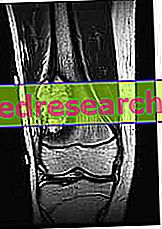
What is Tevagrastim?
Tevagrastim is a solution for injection or infusion (drip into a vein). Contains the active ingredient filgrastim.
Tevagrastim is a "biosimilar" medicine, meaning that it is similar to a biological medicine already authorized in the European Union (EU) that contains the same active substance (also called "reference medicine"). The reference medicine for Tevagrastim is Neupogen. For more information on biosimilar medicines, see the questions and answers by clicking here.
What is Tevagrastim used for?
Tevagrastim is used to stimulate the production of white blood cells in the following situations:
- to reduce the duration of neutropenia (low levels of neutrophils, a type of white blood cell) and the incidence of febrile neutropenia (neutropenia with fever) in patients undergoing chemotherapy (treatment of a tumor) cytotoxic (cell destroyer);
- to reduce the duration of neutropenia in patients undergoing treatment to destroy bone marrow cells before a transplant of the same (as in some leukemic patients) if they are at risk of long-term severe neutropenia;
- to increase neutrophil levels and reduce the risk of infection in patients with neutropenia who have a history of serious and repeated infections;
- to treat persistent neutropenia in patients with advanced human immunodeficiency virus (HIV) infection, with a view to reducing the risk of bacterial infections when other treatments are inadequate.
Tevagrastim can also be used in patients who are about to donate stem cells for a transplant, to help them release these cells from the bone marrow.
The medicine can only be obtained with a prescription.
How is Tevagrastim used?
Tevagrastim is given by subcutaneous injection or intravenous infusion. How it is administered, the dosage and duration of treatment depend on the reason for its use, the patient's body weight and the response to treatment. Tevagrastim is generally given in a specialized treatment center, although patients who are injected under the skin can inject it themselves, provided they are properly trained. For more information, see the package leaflet.
How does Tevagrastim work?
The active substance in Tevagrastim, filgrastim, is very similar to a human protein called granulocyte colony stimulating factor (G-CSF). Filgrastim is produced by a method known as "recombinant DNA technology": it derives from a bacterium, in which a gene (DNA) has been grafted which makes it able to produce filgrastim. The substitute acts similarly to the naturally produced G-CSF factor, stimulating the bone marrow to produce more white blood cells.
What studies have been carried out on Tevagrastim?
Tevagrastim has undergone studies to demonstrate its similarity to the reference preparation, Neupogen.
A main study compared Tevagrastim to Neupogen and a placebo (a dummy treatment) involving 348 breast cancer patients. The study examined the duration of severe neutropenia during the first cycle of cytotoxic chemotherapy in patients.
Two other studies were carried out on patients with lung cancer and non-Hodgkin's lymphoma to examine the safety of Tevagrastim.
What benefit has Tevagrastim shown during the studies?
Treatment with Tevagrastim and Neupogen gave almost similar reductions in the duration of severe neutropenia. In the first 21 days of the chemotherapy cycle, patients treated with both Tevagrastim and Neupogen had on average 1.1 days of severe neutropenia, compared with 3.8 days of those taking placebo. Therefore, the efficacy of Tevagrastim proved to be equivalent to that of Neupogen.
What is the risk associated with Tevagrastim?
The most common side effect seen with Tevagrastim (in more than 1 patient in 10) is musculoskeletal pain (pain in the muscles and bones). In more than one in 10 patients other side effects can be observed, depending on the disease for which Tevagrastim is used. For the full list of all side effects reported with Tevagrastim, see the Package Leaflet.
Tevagrastim should not be used in people who may be hypersensitive (allergic) to filgrastim or any of the other ingredients.
Why has Tevagrastim been approved?
The Committee for Medicinal Products for Human Use (CHMP) considered that, based on the provisions of European Union legislation, Tevagrastim demonstrated quality, safety and efficacy characteristics similar to those of Neupogen. The CHMP is therefore of the opinion that, as in the case of Neupogen, the benefits outweigh the identified risks. The Committee recommended that Tevagrastim be given marketing authorization.
More information on Tevagrastim
On 15 September 2008, the European Commission issued a marketing authorization valid for Tevagrastim, valid throughout the European Union, to Teva Generics GmbH.
For the full EPAR of Tevagrastim, click here. Last update of this summary: 09-2008



